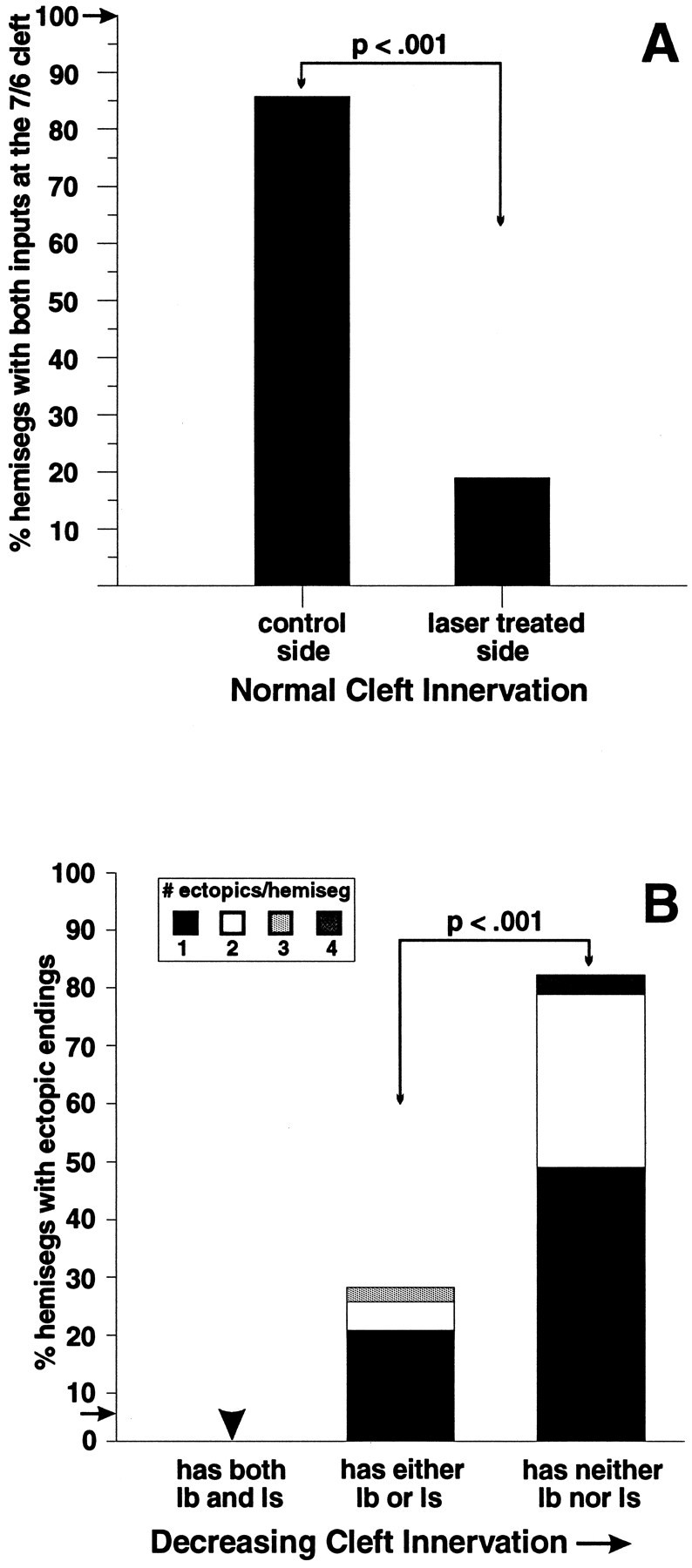Fig. 4.

Reduction in innervation at muscle fibers 7 and 6 leads to the appearance of collateral inputs. A, In control animals, hemisegments A2–A3 always have both type Ib and type Is inputs at the cleft (frequency shown by arrow;n = 32 hemisegments, 8 larvae). In contrast, in laser-treated animals, on the experimental side (contralateral to laser ablation) a significantly smaller number of hemisegments had both cleft inputs present at the 7/6 cleft than on the control side (ipsilateral to laser ablation; n = 21 larvae, 74 hemisegments, A2–A3). B, Increased cleft denervation correlates with an increased probability and frequency of collateral innervation. Muscle fibers 7 and 6 are examined in segments A2–A3. The black bars indicate the percent of hemisegments with ectopic endings that have only one ectopic ending. Bar heights indicate total percent of hemisegments with ectopic endings in each group. Fromleft to right: hemisegments that have both Ib and Is at the cleft (“normal” cleft innervation;n = 6 hemisegments), hemisegments that have one or the other (partial innervation; n = 41 hemisegments), and hemisegments that have neither (complete denervation; n = 27 hemisegments, 21 laser-treated larvae examined in A2–A3). In control animals, ectopically placed inputs were seen at low frequency (shown by arrow;n = 89 hemisegments, 8 animals).
